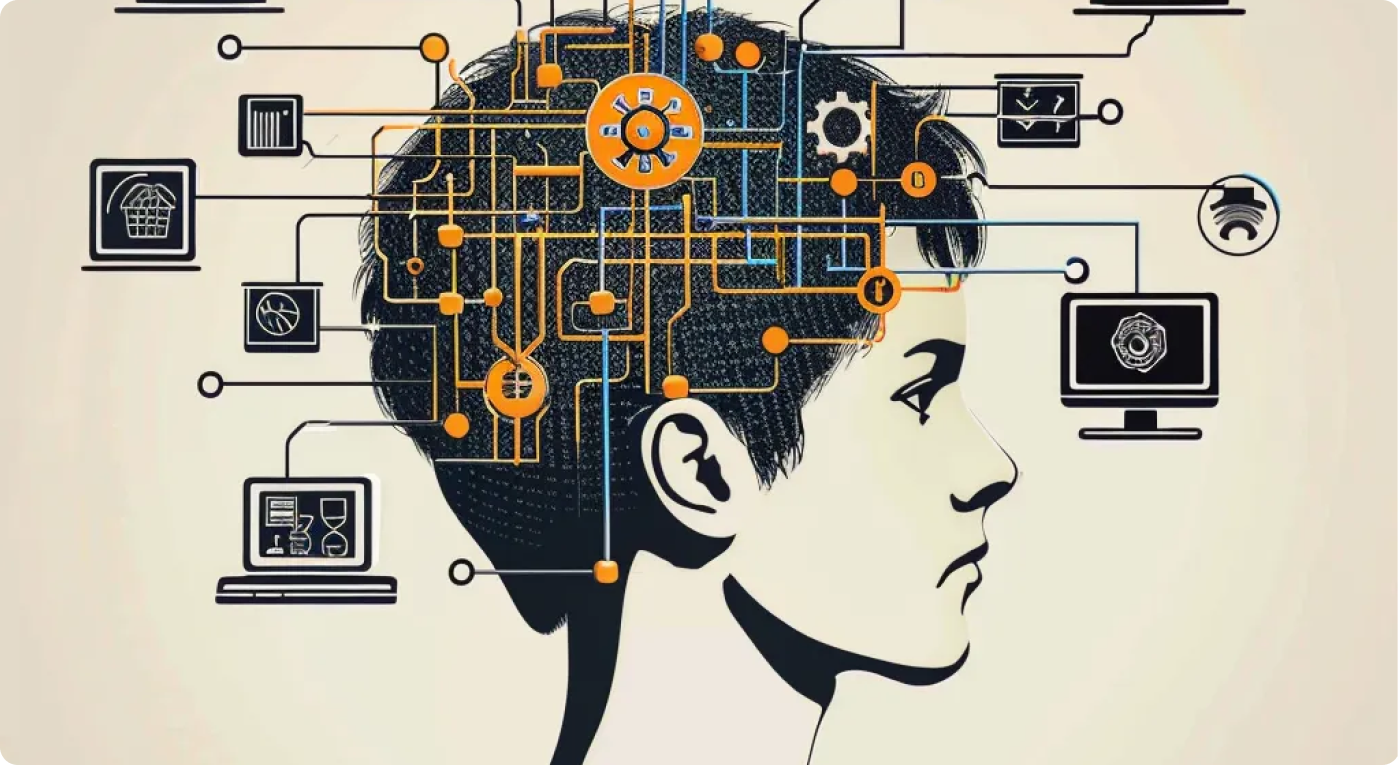When you’re standing at an intersection looking to cross the street, how many times do you press the walk signal call button? Do you press it repeatedly, or is once enough?
Unless you’re in a position to know the truth of the matter — say, you helped to design and implement the signal call — your answer depends on your beliefs about how it works.
Multi-pressers operate on the assumption that presses accumulate, signaling stronger volume of demand. Thus, the signal is more likely to change or even to do so sooner. Single-pressers believe that the system either has a request to change the signal or it doesn’t, so another press during the same traffic cycle won’t add any benefit.
The walk signal, like many of the systems we use each day, doesn’t lay out how it works to any satisfying level of detail. In the absence of information, these emerging beliefs are called mental models.
Let’s take a closer look at what mental models are and ways you can measure them in your user research.
What are mental models?

As a child of the ‘90s playing video games on consoles like the Super Nintendo and Genesis, one common issue you’d encounter was glitchy screens when you turned it on. Many of us would take the cartridge out and blow on the contacts to clear the dust. Unfortunately, we later found out that this could add moisture and do more harm than good. As it turns out, all you needed to do was simply remove and reinsert the cartridge to realign the contacts.
This anecdote highlights two key qualities of mental models.
First, they’re beliefs about how something works, which may not always be factual or complete, and may even be entirely wrong. Accuracy isn’t always necessary, particularly in complex B2B settings where users don’t need full insight into back-end processes. What matters is that the mental model is accurate enough to empower users to achieve their goals, even if it’s only analogous or informationally equivalent to reality.
Second, mental models change how we interpret system feedback, and thus affect our decision-making and later behavior. So understanding and aligning the system with users’ mental models can have an outsized impact on the user experience.
While no two users have identical models, there are often similarities or themes observed within a user base. Going back to our example of the walk signal, we might broadly classify users into single-pressers or multi-pressers — but a closer inspection would show nuances, with individuals having varying levels of detail and formality in their mental models. Nevertheless, identifying common or representative models within a user base can help inform design changes.
Mental models are also adaptable and change based on experience. An influential human factors study led by Roger Schvaneveldt that examined fighter pilots revealed distinct mental model structures between novices and experts. Novices had more diverse models, while experts held more similar models.
This flexibility presents an upside: with training or intuitive system design, users’ mental models can refine and become more accurate over time. For instance, the market success of the Nest thermostat can be partly attributed to its interface aligning closely with users’ mental models, unlike traditional competitors. This underscores the potential impact of considering mental models in system design.
Approaches for measuring and analyzing them
There’s a wide range of methods for assessing users’ mental models, each with its own set of advantages.
The think-aloud protocol offers a glimpse into users’ thought processes as they interact with a system. Participant utterances can reveal mismatches between their expectations and the system’s outcomes, shedding some light on their underlying mental models. This approach, favored by Jakob Nielsen, involves a moderator periodically prompting users to verbalize their thoughts and expectations during a usability test. Across multiple participant sessions, recurring themes in user mental models often emerge.
Another method, promoted by Nikki Anderson-Stanier, is the retrospective interview. Here, users are asked to recall past experiences and describe their thought processes, pain points, expectations, and goals. This method is particularly useful for scenarios where stimuli are unavailable, or for multi-channel experiences that might be difficult to replicate in a usability test.
You can also pose a series of “what-if” questions to participants. Stephen Payne’s research on ATMs used this approach, asking participants to predict outcomes based on various inputs. Through these questions, he discovered that participants varied widely in their beliefs about the information stored on debit cards.
Pairwise comparisons for relatedness ratings involve documenting all the possible inputs and outputs and having participants rate the closeness of each pair on a scale. If you were measuring mental models of Photoshop, for example, you might include concepts like “layer,” “blur,” “smudge,” and so on. As the list of concepts grows, you run the risk of fatiguing participants. For 5 items, they only need to make 10 comparisons — but for 15 items, that grows to 105! The final output is a matrix showing the relative strength of each pairing.
Card sorting offers a different perspective by grouping items based on similarity, making it suitable for scenarios where distinct categories are expected. For a complex system with many elements, this simplifies data collection by giving participants a more manageable task.

Pathfinder networks may be useful for analysis and visualization. This approach mathematically prunes away weakly related ideas, highlighting the essential. The resulting figure makes it easy to compare the mental models of different user groups. This approach also offers similarity and reliability statistics if you want to understand change over time. But be aware that while analysis tools are freely available, they are no longer supported, posing potential challenges for researchers.
Which measurement approach is best?
How precisely and completely you need to understand users’ mental models will depend on your research objectives. For quick usability studies aimed at informing immediate design changes, lighter touch methods like think-aloud or retrospective interviews may suffice.
On the other hand, more advanced approaches are better suited for complex applications with many inputs and outputs, or where the risk of inaccurate models is high. Unlike think-alouds and retrospective interviews, more formal methods require some advanced planning and setup. For example, you may uncover incidental insights about mental models while conducting think-alouds for a different research question — but you won’t get pairwise relatedness ratings without having designed the study for that purpose.
When measuring change over time, advanced methods like Pathfinder network analysis can provide statistical comparisons between different points. But using this tool requires some technical skill.
Also, consider the desired output. While think-aloud may reveal enough aspects of user mental models to fill a slide in a report deck, more thorough methods that document the inputs and outputs can be visualized as more easily digestible flowcharts and other figures.
One way you might think of this progression from think-aloud to more advanced methods is that they reflect an increasingly complete assessment of mental models. While think-aloud may capture certain aspects, advanced methods take more inputs and outputs into account for a more comprehensive view.
The bottom line
Mental models are user theories about how systems work, based on beliefs rather than facts, that influence interactions and interpretations.
Assessment methods range from basic, like think-aloud and retrospective interviews, to advanced, such as relatedness ratings, card sorting, and Pathfinder networks. Basic methods offer quick insights, while advanced ones provide detailed assessments for longer, strategic initiatives. The choice depends on your research goals, the need for precision, and whether you have outputs like flow charts or visualizations in mind.
Understanding mental models is crucial for designing user-friendly experiences, aligning designs with users’ expectations and enhancing system usability.
ANOTHER THOUGHT…
Defending user research with Crabtree’s Bludgeon

When explaining the unique value of user research compared to other insights-generating functions like data science or market research, we often emphasize our mixed-methods approach. You may even find yourself explaining lofty research concepts like triangulation, and using extended metaphors about geopositioning satellites.
At the crossroads of our value in uncovering meaningful patterns lies a fundamental aspect of human nature: the tendency to seek order in chaos. Consider for example the phenomenon of pareidolia, or the strong sense that a face can be perceived in some inanimate object like clouds or an electrical outlet. Even in random noise, we’re prone to perceive underlying meaning.
In fairness, facial recognition is hardwired into our neural circuitry. But we’re almost equally disposed to find logic behind meaningless data or arguments. This principle is articulated in Crabtree’s Bludgeon, which asserts that human intellect can conjure a coherent explanation for any set of seemingly inconsistent observations. It serves as a reminder of our capacity to deceive ourselves, which we can mitigate through proper research.
So next time you’re defending the work we do as UX Researchers, consider invoking faces in clouds and Crabtree’s Bludgeon.
By acknowledging our inclination to find patterns where none exist, we underscore the necessity of rigorous, multi-method research to uncover genuine insights.
This article was originally published on The ¼″ Hole.









